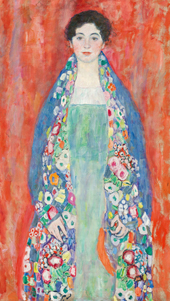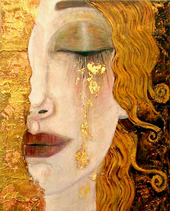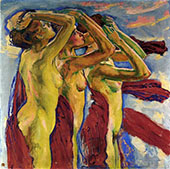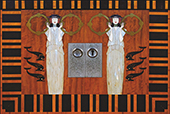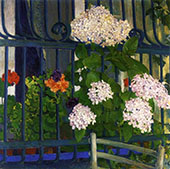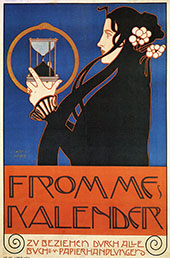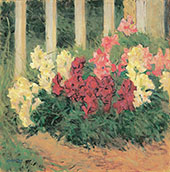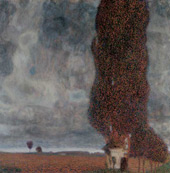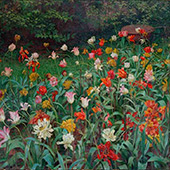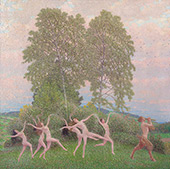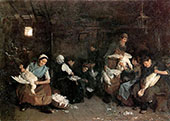Secessionist Oil Painting Reproductions
Find Secessionist Oil Painting Replicas By Secessionist Artists
Secessionist Art: A Brief Introduction
Secessionist art stemmed from an art movement based in Vienna, Austria, in the late nineteenth and early twentieth century. Sometimes also known as the Union of Austrian Artists (or the Vereinigung Bildender Kunstler Osterreichs), they transformed European art. As a movement linked to developments in Art Nouveau, the Vienna Secession artists worked across multiple styles and genres. These art forms included architecture, sculpture, ceramics, furniture, and graphic arts.
This brief introduction presents the most significant Vienna Secession Art and the artists who created them. We will also delve into several famous Gustav Klimt paintings that drove the Viennese Secessionists into 20th century art.
What was the Secessionist Movement?
The Vienna Secessionist movement was a tight-knit group of designers, artists, and architects. They broke away from the highly traditional Viennese art establishment to pursue their artistic aims and beliefs.
These aims included:
● Exchanging ideas with international artists.
● Rejecting artistic nationalism.
● Exploring and reviving the decorative arts.
● Creating a “total art” that combines architecture, painting, and decoration.
● Opposing the domination of “official” institutions such as the Vienna Kunstlerhaus and the Vienna Academy of the Arts.
One of the Viennese Secessionists’ most famous creations was the Secession Building. Joseph Maria Olbrich designed the domed structure as a venue for the group’s exhibitions. Gustav Klimt also created artwork for the building, known as the Beethoven Frieze. In addition to producing works in architecture and fine arts, the group also published a magazine. Titled Ver Sacrum (which translates as Sacred Spring), it publicized the group’s beautifully stylized works of graphic art.
Herman Bahr, an Austrian literary critic, further defined the group’s aims in the first issue of Ver Sacrum. He wrote that the group didn’t want to set modern artists “against those of the past.” Instead, they challenged those with a “commercial interest” in “not letting art bloom.” For the Vienna Secession, this wasn’t a debate over aesthetics. Instead, it was a new way of viewing art and its societal role.
What Does Vienna Secession Mean in Art?
In Art History, “secessionist” means a break between artists and traditional art establishments. The term usually applies to avant-garde groups, such as the Viennese Secessionists, breaking with institutions such as the Vienna Kunstlerhaus. Other comparable movements included the Munich Secession and the Berlin Secession. The French Société Nationale des Beaux-Arts rejected French government control over the Salon exhibition system.
For Secessionist artists, Art Nouveau principles were a big inspiration. Moreover, as a movement arising in 1890, Art Nouveau was a reaction against traditional academic art of the 19th century. As such, artists and architects such as Charles Rennie Mackintosh and Alphonse Mucha were highly influential. Their style of whiplash lines, modern materials, and natural forms played a significant role in the Vienna Secession style.
Who were the Viennese Secession artists?
Austrian artists and creatives founded the Vienna Secession movement on 3 April 1897. This group included architects such as Otto Wagner, Joseph Maria Olbrich, and Josef Hoffman. The artists Koloman Moser, Maximilian Lenz, Max Kurzweil, and Gustav Klimt were also vital founding members. Alphonse Mucha, famous for his Art Nouveau posters, was another original member of the group. At the start of the movement, the Vienna Secession boasted 50 members. Together, these men resigned from the Association of Austrian Artists. Instead, they founded their “Union of Austrian Artists,” the Vienna Secession. Among these names, one artist particularly stands out. This artist was, of course, Gustav Klimt. Members elected Klimt as the group’s president at the first Vienna Secession meeting.
The Kiss by Gustav Klimt: A Vienna Secession Artist
As well as championing the Vienna Secession, Gustav Klimt produced some of its most recognizable artworks. Famous oil paintings include Gustav Klimt's The Tree of Life, a part of the Stoclet Frieze, and his Portrait of Adele Bloch Bauer I, more affectionately known as the Woman in Gold painting. However, The Kiss by Klimt is arguably his most iconic work of art. It represents the pinnacle of the artist’s “Gold Phase.” Indeed, Klimt loved adorning his works with precious metals such as gold, silver, and platinum leaf. The Kiss by Klimt is one of the most romantic paintings in the history of modern art.
Klimt traveled to the Italian city of Ravenna in 1903, where he adored the town’s many golden mosaics. As well as this specific inspiration, Klimt’s brother and father were also professional goldsmiths. Their work explains the prevalence of gold tones in early works such as Klimt's painting Judith II. While Klimt's famous painting enjoyed a favorable reception, this was not the case. For instance, Klimt created paintings for the ceiling of the University of Vienna in 1900 titled Medicine, Philosophy, and Jurisprudence. Critics and academics strongly criticized his paintings for their sexualized nature. Only small fragments, such as Hygieia Medicine detail, survive today, with the rest destroyed through Nazi looting.
When did the Vienna Secession end?
The original Vienna Secessionist group split in 1905. At this time, some of the movement’s leading artists, including Hoffman, Klimt, and Wagner, resigned. They disagreed with other members’ artistic priorities. The discord stemmed from those who prioritized painters and traditional fine arts. On the other hand, Hoffman, Klimt, and Wagner insisted on equal respect and treatment for decorative art and artists. Despite this split, the Viennese Secessionist group continued to function. Nonetheless, it lost much of the excitement and originality of the group’s earlier years. Without Gustav Klimt as a driving force, the group struggled to keep its avant-garde relevance.
While there is still a Vienna Secession movement today, it petered out with the start of the Second World War. From 1939 onwards, the growing repression of Hitler and the Nazi party ended German and Austrian artistic freedom. Indeed, the Nazis destroyed the Vienna Secession building. They claimed it symbolized “degenerate art.” However, architects and artists faithfully reconstructed the building after World War II. Secessionist artists still hold exhibitions in this space today.
Why was the Vienna Secession important for Austrian art?
The Vienna Secession was incredibly significant for Austrian art. Moreover, their insistence on artistic freedom and creativity was a powerful inspiration for other avant-garde artists. They also gave the city of Vienna its first venue dedicated purely to contemporary art. As a result, the Vienna Secession building put Austrian art back on the global map. It also paved the way for painters like Egon Schiele and Oskar Kokoschka, who created intensely personal and expressive artworks.
As well as developments within Austria, the Vienna Secessionist artists inspired international movements. These developments include later Art Nouveau creations and European Expressionist art.
Vienna Secession Art: Replica Oil Paintings for Sale
Explore our extensive collection of famous oil paintings to enjoy the ethereal beauty of Viennese Secessionist art. Discover the joy of gold wall art featured in many Gustav Klimt paintings, including Woman in Gold and his eternally famous The Kiss painting.
We specialize in oversized wall art. Buy reproduction oil paintings in large size hand-painted oil on canvas art.
Testimonial from Loris H, The Colony, Texas
Cannot Find What You Are Looking For?
Reproduction Gallery Information
Customer Service
(Send Us A Message)
Tel: (503) 937 2010
Fax: (503) 937 2011



